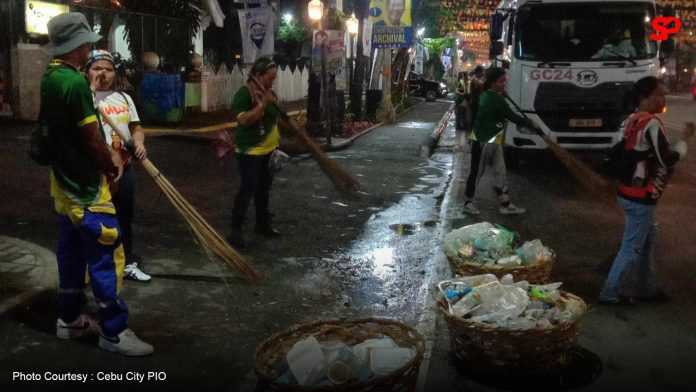By Xander Ledesma
The streets of Cebu were filled with excitement as over four million people gathered to participate in the 2025 Sinulog Grand Parade, one of the largest and most vibrant cultural events in the Philippines. However, as the colorful celebration came to a close, so did the monumental task of cleaning up afterward.
In an impressive display of coordination, the city’s Department of Public Services (DPS) successfully collected a staggering 290 tons of trash from the streets following the event—a significant increase from the 205 tons collected in 2024.
According to DPS Head Poloy Gelasque, the cleanup operation began , just hours after the parade concluded. The cleanup crew worked through the night, finishing at 7 a.m. the following day. The scale of the operation involved 85 garbage trucks, including support from barangay and engineering vehicles, which worked together to clear the entire parade route.
The Sinulog Grand Parade is renowned not only for its extravagant floats, dazzling costumes, and cultural performances but also for the vast number of attendees who flock to the streets to witness the festivities. With such a large crowd comes an equally large environmental footprint, and the DPS is tasked with managing the aftermath of the celebration.
The Sinulog Festival, held every January in Cebu City, honors the Santo Niño, the Child Jesus, and has been celebrated for over 30 years. Over the decades, it has grown in scale, attracting millions of people from all over the country and beyond. The event is considered one of the largest religious and cultural celebrations in the Philippines, contributing significantly to both the local economy and the city’s tourism industry.
However, the increase in participants brings the inevitable challenge of waste management. In previous years, the cleanup operation after the parade was no small feat, but as the event continues to grow, so does the amount of trash left behind. The collection of 290 tons in 2025 is a stark reminder of the environmental impact that large-scale festivals can have.
As Sinulog evolves, local officials recognize the need for more sustainable solutions to address the waste generated by the event. In recent years, efforts have been made to promote waste segregation and recycling during the festival. Still, the sheer volume of trash remaining after the grand parade remains a significant challenge.

